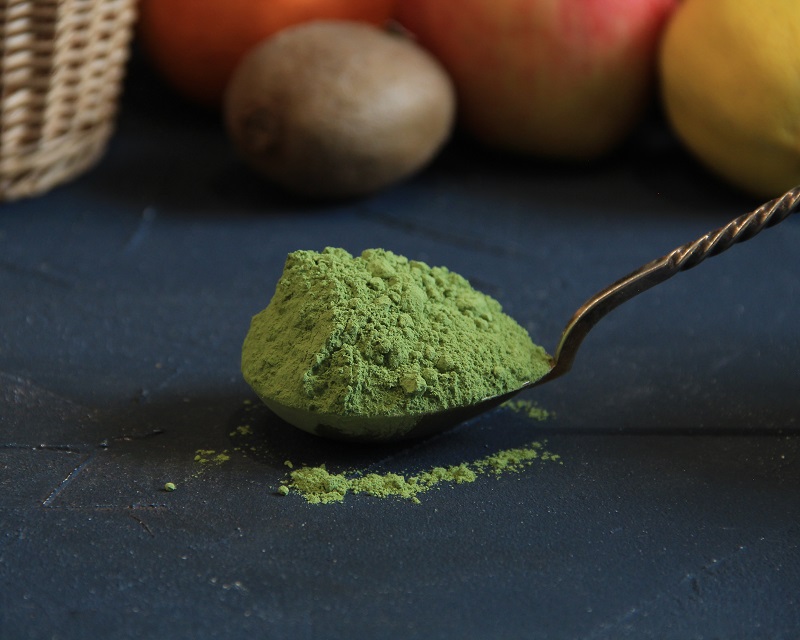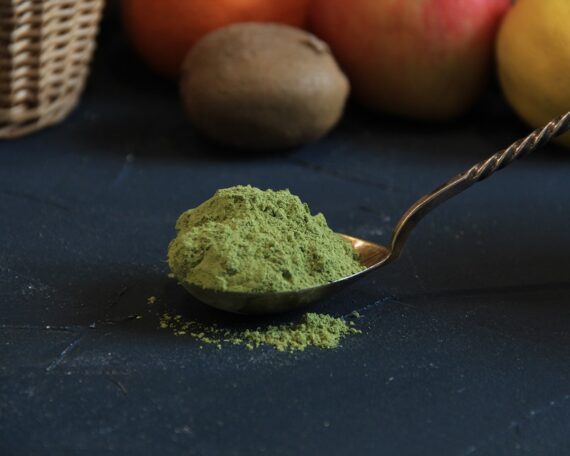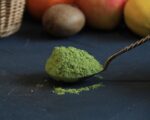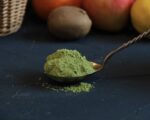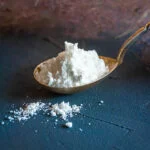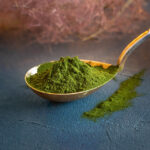Organic Ceremonial matcha tea from Japan
From 9.05€

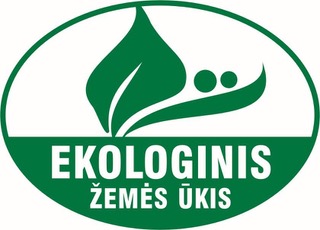
Japanese Ceremonial Matcha , a bright green tea powder, has been an integral part of Japanese culture for centuries. Its origins date back to the 12th century, where Zen Buddhist monks first introduced the art of growing and preparing matcha. Over time, the elaborate tea ceremony has evolved to become a profound symbol of harmony, respect and mindfulness in Japanese tradition.
Organic ceremonial matcha tea from Japan is the highest quality green tea powder, which has been used in the Japanese traditional tea ceremony for almost a millennium.
Ceremonial matcha is made from tea leaves grown in the shade, avoiding direct sunlight, thus stimulating the production of higher levels of chlorophyll for a richer green colour. After picking, the leaves are thoroughly steamed, dried and ground to form a fine, velvety powder called macha. It is this type of ceremonial machia that meets EU standards for environmental friendliness.
Ceremonial matcha has a very pleasant, aromatic and mild flavour. That is why it can be consumed as a pure tea, as an energising drink or as part of the main tea ceremony.
Maca is rich in antioxidants and it also has caffeine, but it is completely different from the caffeine in coffee.
Matcha’s journey from ancient ceremonial rituals to a modern healthy lifestyle has cemented its place as one of the most famous drinks around the world. This green tea powder continues to fascinate with its rich history, cultural significance and undeniable health benefits.
As a powdered green tea, matcha retains all the nutrients found in the tea leaves, making it a potent source of antioxidants, vitamins and minerals.
Matcha is a popular choice among those seeking a balanced lifestyle. Many people value matcha for its ability to help maintain concentration and a sense of calm, while maintaining energy. In addition, the chlorophyll it contains may help natural cleansing processes, removing harmful toxins.
Attention:
Although matcha is generally safe to consume in moderation, matcha is well tolerated and contains caffeine, which may cause sensitivity in some individuals.
Macha contains (-)- epigallocatechin-3-gallate.
The daily portion must contain less than 800 mg (-)-epigallocatechin-3-gallate (2 g portion – 41 mg).
Excessive intake can cause irritability, sleep or digestive problems.
Pregnant or breastfeeding women and people with caffeine sensitivity should be careful before including matcha in their diet.
Use and preparation of ceremonial matcha:
Japanese ceremonial matcha is traditionally prepared using a bamboo matcha whisk and a bowl, paying homage to the traditional tea ceremony.
Preparation: sieve 0,5 – 1 tsp. sp. Place the matcha in a bowl, add about 100 ml of hot water (about 80 °C) and whisk in a zigzag motion until an emerald-coloured foam is formed. If you want your matcha to be less strong, add more water or vegetable milk to taste.
For best results, the whisk should be soaked in hot water before use.
Macha is becoming increasingly popular as a culinary ingredient, and has recently been used in cocktails, lattes, desserts and savoury dishes, where it can have a unique flavour and a distinctive colour.
Japanese ceremonial matcha is a symbol of ancient wisdom and modern prosperity. In addition to its cultural significance, this emerald color elixir offers great health benefits and pleasant sensations. Whether you’re taking part in a traditional tea ceremony or enjoying the culinary discoveries of Machia, incorporating this vibrant green powder into your daily routine promises a journey of remarkable sensations that it brings to body, mind and spirit.
Delicious!
Sources:
https://matcha.com
https://ujido.com
NOTE. The information contained herein should not be construed as a recommendation for treatment or other health issues. We encourage you to make personal decisions about your personal health, taking into account a wide range of sources of information.
100% Organic Matcha Green Tea (Camellia Sinensis)
Energinė vertė 1375 kJ/ 329 kcal
Fat 4,7 g
- of which saturates - 1,0 g
- of which monounsaturated fatty acids - 0,3 g
- of which polyunsaturated fatty acids - 3,1 g
Carbohydrates 2,8 g
- of which sugar 2,3 g
Fiber 30 g
Protein 29 g
Salt 0 g
Vitamin A 1500 μg
Folic acid (B9) 100 μg
Iron 6,6 mg
Caffeine - 2371 g (2 g serving - 47 mg)
(-)-Epigallocatechin-3-gallate (EGCG) - 2070 mg (2 g serving - 41 mg)
Store in a cool, dry place.

